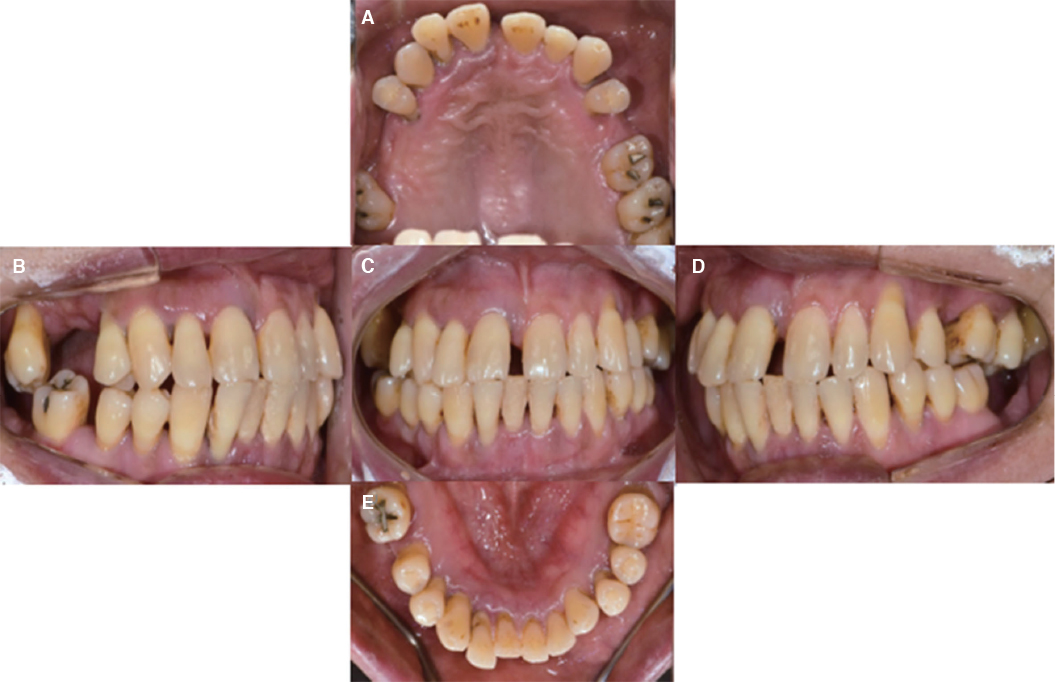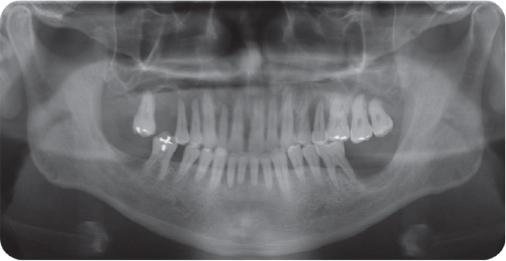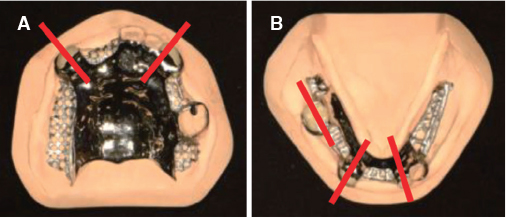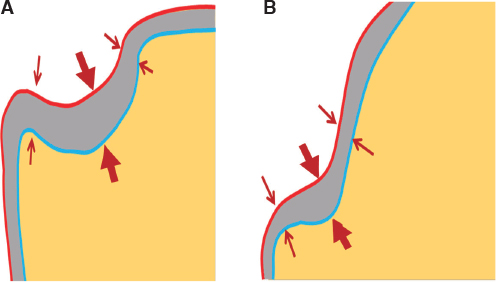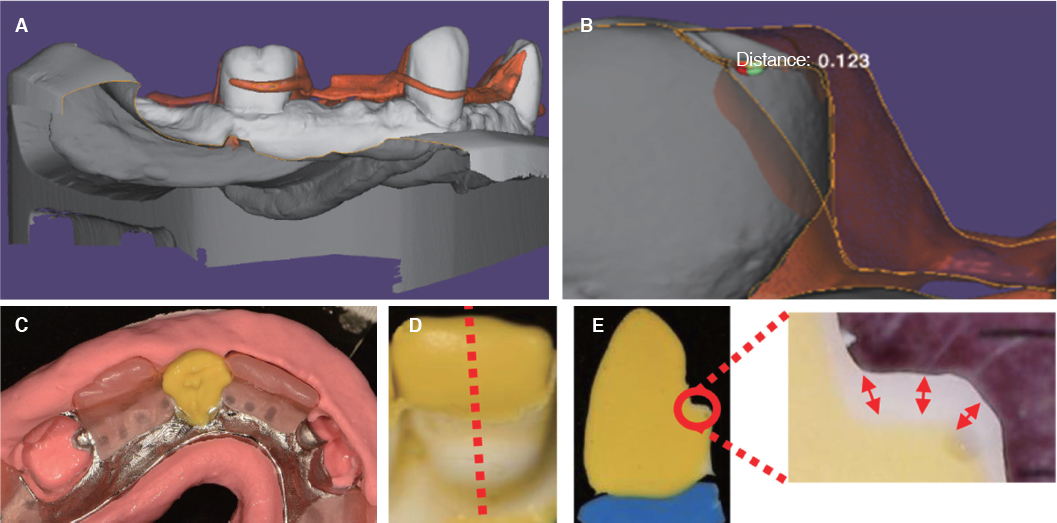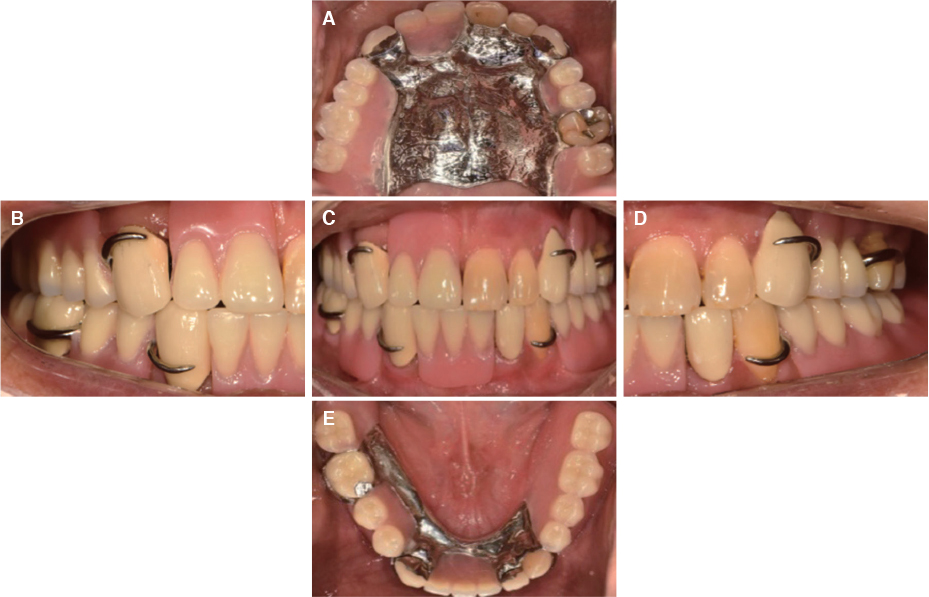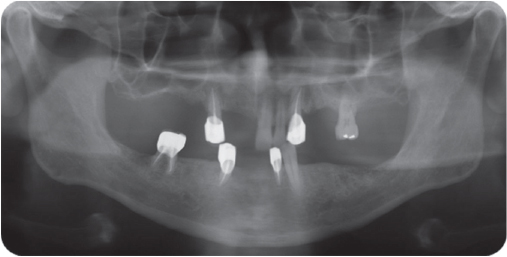J Korean Acad Prosthodont.
2018 Jan;56(1):17-24. 10.4047/jkap.2018.56.1.17.
Comparison of internal adaptation of removable partial denture metal frameworks made by lost wax technique and printing technique of pattern using CAD
- Affiliations
-
- 1Department of Prosthodontics, School of Dentistry, Kyung Hee University, Seoul, Republic of Korea. odontopia@khu.ac.kr
- KMID: 2402983
- DOI: http://doi.org/10.4047/jkap.2018.56.1.17
Abstract
- Lost wax technique of casting wax patterns has been used principally to make metal frameworks of removable partial dentures. Since the development of digital technology and CAD, metal frameworks can be built through digital surveying and framework designing. Many cases proved that resin patterns made by CAD printing method were well adapted to internal oral structure and final metal frameworks also showed good internal adaptation as well. The metal frameworks of a removable partial denture were made by both lost wax technique and CAD technique and were applied to a patient with severe alveolar bone loss. Using CAD data and fit checker, internal adaptation of both metal frameworks were evaluated by comparing the gap between surveyed crown and its structure. This study is to prove that metal frameworks by both techniques showed adaptation that can be applied in clinical field.
Figure
Reference
-
1. Eggbeer D, Bibb R, Williams R. The computer-aided design and rapid prototyping fabrication of removable partial denture frameworks. Proc Inst Mech Eng H. 2005; 219:195–202.
Article2. Park JM, Hong YS, Park EJ, Kim SK, Koak JY, Heo SJ. Study on the accuracy of digital removable partial denture and the comparison with the CAD model: A pilot study. Biomater Res. 2012; 16:102–107.3. McGuire MK, Nunn ME. Prognosis versus actual outcome. II. The effectiveness of clinical parameters in developing an accurate prognosis. J Periodontol. 1996; 67:658–665.
Article4. McGuire MK, Nunn ME. Prognosis versus actual outcome. III. The effectiveness of clinical parameters in accurately predicting tooth survival. J Periodontol. 1996; 67:666–674.
Article5. Faggion CM Jr, Petersilka G, Lange DE, Gerss J, Flemmig TF. Prognostic model for tooth survival in patients treated for periodontitis. J Clin Periodontol. 2007; 34:226–231.
Article6. Park SA, Koak JY, Heo SJ, Kim SK, Park JM. RPD framework fabrication using computer-aided design (CAD) and rapid prototyping. J Korean Acad Prosthodont. 2017; 55:94–99.
Article7. Lee JW, Park JM, Park EJ, Heo SJ, Koak JY, Kim SK. Accuracy of a digital removable partial denture fabricated by casting a rapid prototyped pattern: A clinical study. J Prosthet Dent. 2017; 04. 04.
Article8. Fasbinder DJ. Clinical performance of chairside CAD/CAM restorations. J Am Dent Assoc. 2006; 137:22S–31S.
Article9. Dunham D, Brudvik JS, Morris WJ, Plummer KD, Cameron SM. A clinical investigation of the fit of removable partial dental prosthesis clasp assemblies. J Prosthet Dent. 2006; 95:323–326.
Article10. Wu J, Wang X, Zhao X, Zhang C, Gao B. A study on the fabrication method of removable partial denture framework by computer-aided design and rapid prototyping. Rapid Prototyp J. 2012; 18:318–323.
Article11. Kattadiyil MT, Mursic Z, AlRumaih H, Goodacre CJ. ntraoral scanning of hard and soft tissues for partial removable dental prosthesis fabrication. J Prosthet Dent. 2014; 112:444–448.
Article12. Hong YS, Park EJ, Kim SK, Koak JY, Heo SJ, Park JM. Surveyed restoration and RPD framework design utilizing electronic surveying. J Korean Acad Prosthodont. 2011; 49:354–361.
Article13. Kanazawa M, Iwaki M, Minakuchi S, Nomura N. Fabrication of titanium alloy frameworks for complete dentures by selective laser melting. J Prosthet Dent. 2014; 112:1441–1447.
Article
- Full Text Links
- Actions
-
Cited
- CITED
-
- Close
- Share
- Similar articles
-
- DMLS (Direct Metal Laser Sintering) denture repair technique for a removable partial denture: A case report
- Subtractive versus additive indirect manufacturing techniques of digitally designed partial dentures
- A case of removable dentures using digital method
- Evaluation of trueness and precision of removable partial denture metal frameworks manufactured with digital technology and different materials
- Comparison of digitalized fabrication method for interim removable partial denture: case reports

